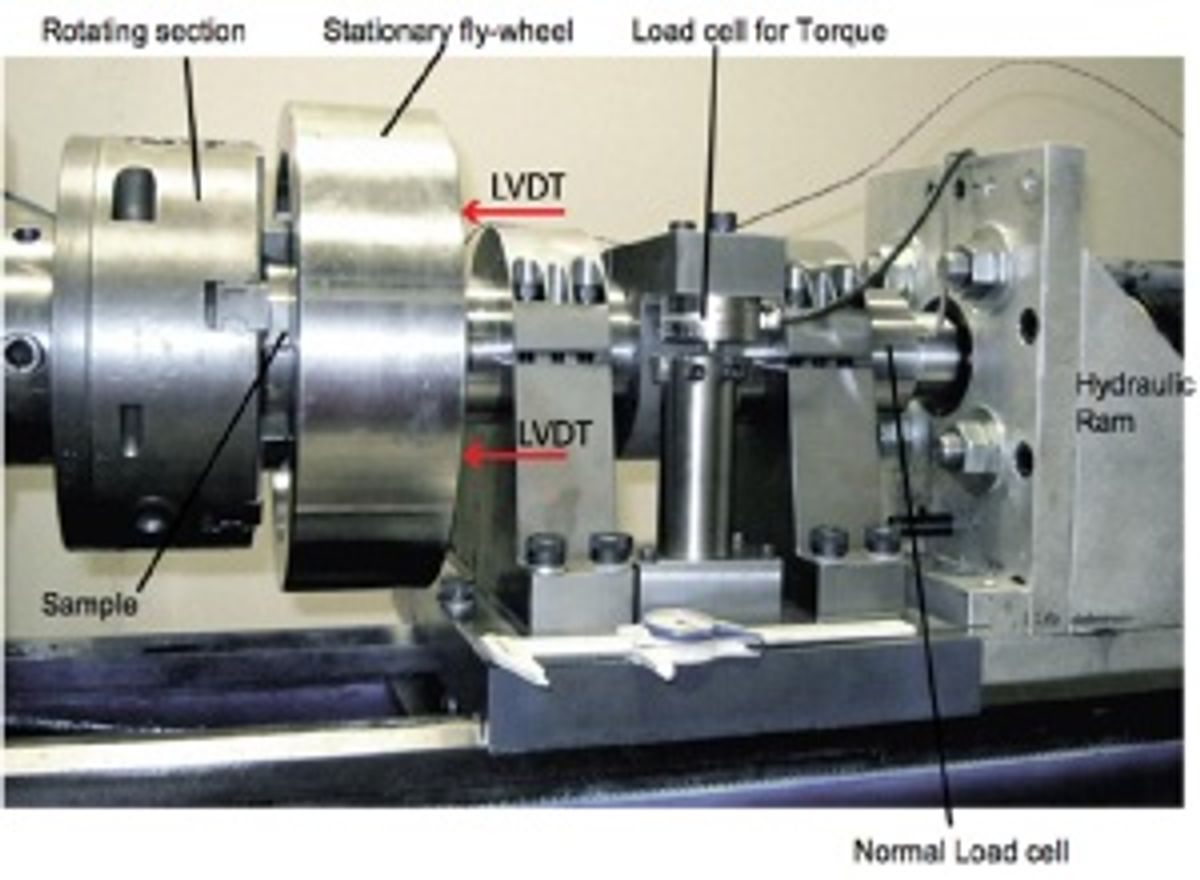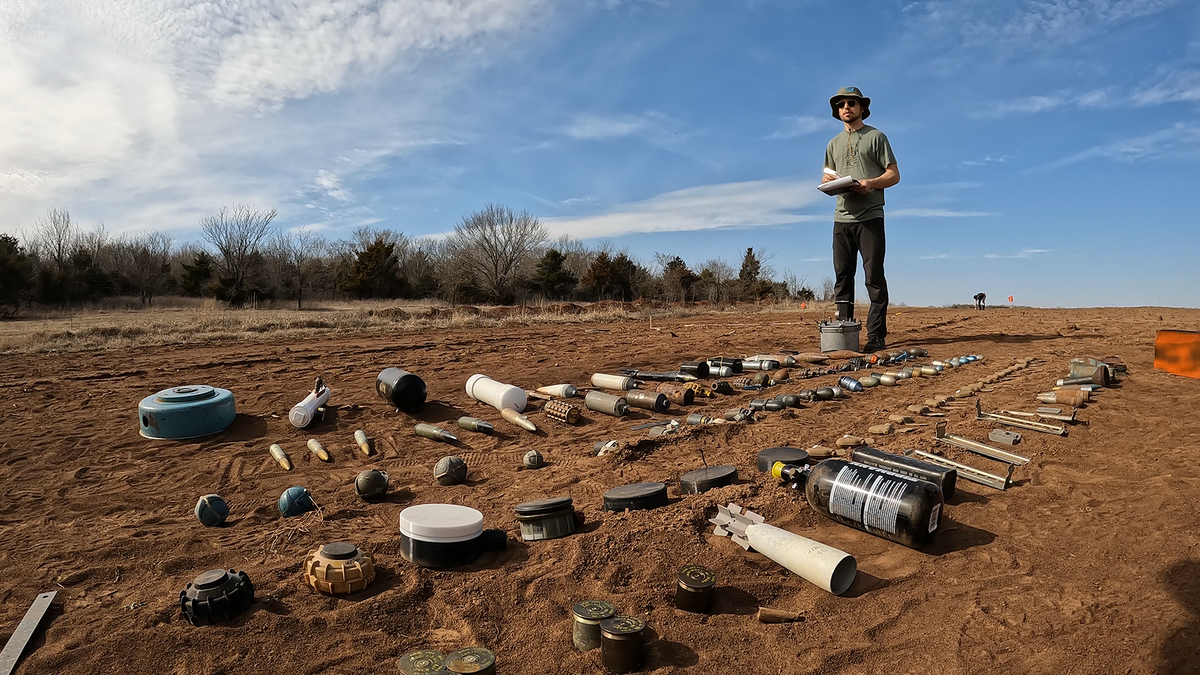Earthquake fault failure is complex. The stressed rock weakens and leaps in a multistage pattern: the rock’s shear strength drops suddenly, recovers, and then drops again. The last stage is already fairly well understood. To over-simplify: pressure, friction, and ambient heat melt the rock, and the resulting viscous mess lubricates the fault.
Until now, though, geologists haven’t been quite sure how the fault loses its grip the first time. In the 30 August Nature, two Scripps Institute of Oceanography geophysicists attribute the first slip to small, localized “hot spots” of expanding material that force the fault faces apart. This reduces the pressure on the rest of the rock face, reducing the friction between them and lowering the resistance to slip.
This may be the first time such a lathe has been adapted to high-speed friction experiments. Instrumentation included a set of thermocouples set into the rock plate in the flywheel, three linear variable differential tranformers to measure rock wear or possible expansion (dilatancy) of material in the interface, and a load cell for calculating torque. Building the rig required adding a massive flywheel, reinforcement, and stiffening to reduce vibration and tool-face chatter to geological levels. Nonetheless, the authors report, “The onset of weakening in our experiments is manifested in a transition to regular, high-frequency oscillations…, and sometimes a barely audible rumble.”
At a given temperature and pressure, the researchers found a critical velocity—the slip speed at which the shear strength would suddenly plummet and the sample would jump. As the sample neared this critical velocity, an increment as small as 0.01 meter per second could trigger the transition.
While frictional “flash melting” of microscopic asperities (the peaks of rough material) might possibly cause the sudden failure, the researchers think the evidence favors another mechanism: “positive feedback between heating and dilatancy.”
And In Other Earthquake News…
As the Scripps paper arrived from La Jolla, Calif.., an unusual swarm of small earthquakes seemed finally (one hopes) to be fading from the area around Brawley, Calif., just over 120 miles east-by-north along Interstate 8.
From 25 through 28 August, seismologists logged more than 400 tremors of magnitude 1.0 or greater in the region, according to the LA Times. The US Geological Survey Earthquake Hazards map shows 144 quakes (magnitude 2.5 to 5.5) for the 23-28 August period—the great majority of them coming on the 26th and 27th.
The Transportable Array is a migrating 500-mile-wide band of 400 high-quality, portable seismographs that covers the country in a 42-mile grid from Canada to Mexico and the Gulf. The portable array started with NSF funding in 2007, beginning on the Pacific coast. Today, it has rolled across the country to the eastern edge of the Midwest, reaching from Michigan’s Upper Peninsula to Louisiana and from Ohio to Florida.
From November 2009 to September 2011, the Transportable Array covered Texas. University of Texas geophysicist Cliff Frohlich analyzed the data, paying particular attention to the state’s oil-rich Barnett Shale. After analyzing more than 1300 events and discarding quarry blasts and signals straying in from out-of-state, he identified 149 earthquakes in the region—nothing like the 400 logged last week in Brawley, but many times the 8 listed by the National Earthquake Information Center. In a recent analysis published in the Proceedings of the National Academy of Science, Frohlich persuasively demonstrated that the quakes cluster around the state’s highest-volume injection wells, those pumping 150,000 barrels of water per month (BWPM) or more into the ground.
His conclusion: “The most significant result of this investigation is that all of the better located epicenters were situated within a few kilometers of one or more injection wells…. It is possible that some of these earthquakes have a natural origin, but it is implausible that all are natural.”
Images: Scripps Oceanographic Institute, USArray
Douglas McCormick is a freelance science writer and recovering entrepreneur. He has been chief editor of Nature Biotechnology, Pharmaceutical Technology, and Biotechniques.






